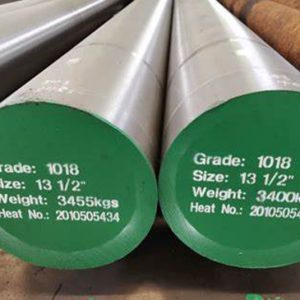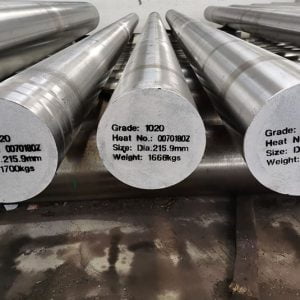Introduction

In the realm of metallurgy, 1060 carbon steel bars represent a pivotal material known for its robust properties and versatile applications across various industries. With a high carbon content around 0.60%, these bars strike a balance between strength, hardness, and machinability, making them indispensable in manufacturing, construction, and automotive sectors. This blog delves deeper into the nuanced characteristics, mechanical attributes, extensive applications, advantages, and environmental impact of 1060 carbon steel bars, offering a comprehensive exploration of their significance in modern industrial practices.
Understanding 1060 Carbon Steel
1060 carbon steel derives its strength and resilience from its precise chemical composition, typically composed of 0.60% carbon and 0.60 – 0.90% manganese. This composition not only enhances the material’s hardness but also contributes to its excellent machinability and formability. The controlled levels of phosphorus (maximum 0.04%) and sulfur (maximum 0.05%) ensure that the steel maintains its integrity during various manufacturing processes, including forging, machining, and welding.
Mechanical Properties
The mechanical properties of 1060 carbon steel bars are key indicators of their suitability for demanding applications:
- Hardness: Falls within the range of 163 to 212 HB (Brinell hardness), ensuring resistance to abrasion and wear.
- Tensile Strength: Approximately 620 MPa (90,000 psi), indicating the maximum stress the material can withstand before failure.
- Yield Strength: Around 580 MPa (84,000 psi), highlighting its ability to endure significant loads without permanent deformation.
These mechanical characteristics make 1060 carbon steel bars ideal for components and structures requiring high strength and reliability.
Applications
The versatility of 1060 carbon steel bars enables their widespread use across multiple industries:
- Manufacturing: Essential for the production of tools, machine parts, and components where hardness and wear resistance are critical.
- Construction: Used as reinforcement bars in concrete structures and as structural components due to their strength and durability.
- Automotive: Applied in gears, shafts, and other automotive components where toughness and fatigue resistance are paramount.
Moreover, 1060 carbon steel bars find applications in agricultural equipment, shipbuilding, and general machinery manufacturing, showcasing their adaptability across diverse sectors.
Advantages of 1060 Carbon Steel Bars
Compared to alternative materials, 1060 carbon steel bars offer distinct advantages:
- Cost-effectiveness: Economical compared to alloys with higher carbon content, making them accessible for various industrial applications.
- Machinability: Exhibits good machinability, allowing for precision machining and fabrication of complex shapes and structures.
- Weldability: Suitable for welding processes, facilitating the assembly of components and structures with minimal difficulty.
These advantages underscore the popularity of 1060 carbon steel bars in industries seeking reliable and efficient materials.
Heat Treatment Process Of 1060 Carbon Steel Bar
| Heat Treatment Process | Description |
|---|---|
| Annealing | Heating the steel to a specific temperature (usually around 800-900°C) and then slowly cooling it to room temperature to soften the material and relieve internal stresses. This improves machinability and reduces hardness. |
| Normalizing | Heating the steel to a temperature above the critical range, followed by air cooling. This process refines the grain structure, improves machinability, and achieves uniformity in microstructure and mechanical properties. |
| Quenching | Rapidly cooling the heated steel by immersing it in a quenching medium (such as water, oil, or air) to achieve high hardness and strength. This process hardens the steel but may increase brittleness if not followed by tempering. |
| Tempering | Reheating the quenched steel to a temperature below the critical range and then cooling it at a controlled rate. This process reduces internal stresses, enhances toughness and ductility, and improves the steel’s overall stability. |
Environmental Impact

In terms of sustainability, 1060 carbon steel bars are recyclable and contribute to reducing environmental impact through efficient material use and recycling practices. Their durability and recyclability support environmentally conscious manufacturing and construction processes, aligning with global efforts towards sustainability.
Conclusion
In conclusion, 1060 carbon steel bars play a crucial role in modern industrial applications, thanks to their exceptional mechanical properties and versatile applications. From manufacturing precision tools to reinforcing concrete structures and fabricating automotive components, these bars demonstrate unparalleled reliability and performance. Understanding the nuanced composition, mechanical attributes, applications, and advantages of 1060 carbon steel bars underscores their pivotal role in advancing technology and infrastructure globally.
FAQ
Q: How does 1060 carbon steel compare to higher carbon steels such as 1095?
A: While 1095 carbon steel offers higher hardness and wear resistance, 1060 strikes a balance between strength, toughness, and machinability, making it more suitable for applications requiring both durability and ease of fabrication.
Q: What precautions should be taken when machining 1060 carbon steel bars?
A: Proper cooling and lubrication are essential during machining to prevent overheating and maintain tool life. Additionally, ensuring sharp cutting tools helps achieve optimal results.
Q: Can 1060 carbon steel bars be surface-treated for enhanced properties?
A: Yes, various surface treatments such as nitriding or coatings can be applied to improve wear resistance or corrosion resistance based on specific application requirements.
Q: Are there any limitations to using 1060 carbon steel bars in certain environments?
A: While versatile, 1060 carbon steel bars may not be suitable for highly corrosive environments without proper surface treatment or alloy additions to enhance corrosion resistance.






